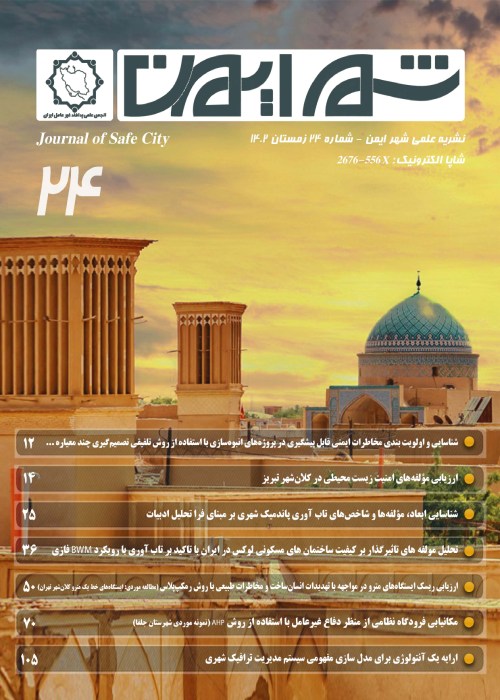Assessment of the Level of Resiliency in Urmia City
Urbanization is one of the most prominent features of the world today, and most of the world's population resides in cities. Most towns and settlements are located in places that are exposed to various natural hazards or man-made disasters due to the interference and advancement of human technology which is a major challenge in achieving the sustainable development of urban communities. An attitude that has been present in urban planning and crisis management in dealing with accidents has been coping attitudes and reducing vulnerability. At present, the approach to upgrade is a new perspective that emphasizes the reduction of vulnerability and a resilient view to increasing the resilience and flexibility of cities against natural and man-made disasters. The type of applied research and its method is descriptive-analytical. To do research, a questionnaire was used that was completed by 40 urban experts. The results show that the Urmia city is relatively favorable in terms of social and infrastructural exposure, but in terms of institutional-managerial, economic, and physical-environmental vibrations, it is not desirable. In general, the overall viability of Urmia city is less than optimal for experts, so that the calculated value of the overall vibration of Urmia city is 2.94 below the baseline (3). In the end, according to the stepwise regression test, among the components of the urban vibrancy of Urmia, the social index had the most effect on the urbanization of Urmia, and the infrastructure index had the least effect.
- حق عضویت دریافتی صرف حمایت از نشریات عضو و نگهداری، تکمیل و توسعه مگیران میشود.
- پرداخت حق اشتراک و دانلود مقالات اجازه بازنشر آن در سایر رسانههای چاپی و دیجیتال را به کاربر نمیدهد.


